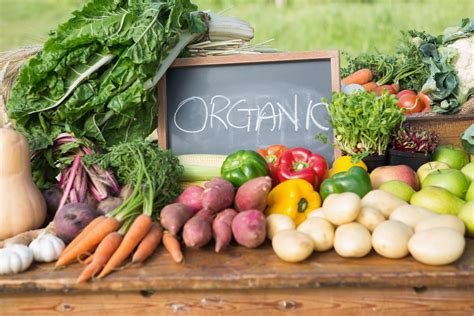Exploring the Rich Culture and Cuisine of South America: A Foodie’s Adventure
Are you a foodie looking to embark on a culinary adventure? Look no further than the vibrant and diverse continent of South America. From the spicy and savory flavors of Peru to the hearty and soulful dishes of Brazil, South American cuisine offers a rich tapestry of culinary delights waiting to be explored. In this blog post, we will delve into the world of South American food, from the traditional ingredients and flavors that define the region’s cuisine to the influence of indigenous cultures and European colonization on its culinary landscape. We will also take a closer look at some of the famous dishes every foodie must try and the street food delights awaiting you across the continent. Join us as we uncover the regional variations in South American cuisine, indulge in its unique beverages, and celebrate the vibrant food festivals and traditions that have been preserved for future generations. Get ready to be tantalized by the rich culture and cuisine of South America.
Introduction to South American Cuisine
South American cuisine is a rich and diverse tapestry of flavors, ingredients, and culinary traditions that have been shaped by centuries of history and cultural influences. From the mouthwatering street food of Peru to the hearty meat dishes of Argentina, the continent offers a wide array of iconic dishes that are beloved around the world.
One of the defining features of South American cuisine is its incredible diversity, with each country having its own unique culinary heritage and traditions. Whether it’s the fresh ceviche of Ecuador, the spicy empanadas of Colombia, or the savory feijoada of Brazil, there is no shortage of delicious and distinctive dishes to explore.
Another hallmark of South American cuisine is its emphasis on fresh, locally sourced ingredients. Many traditional dishes are centered around staple foods such as corn, potatoes, and beans, which have been grown in the region for thousands of years. This focus on using high-quality, seasonal ingredients is a key part of what makes the food of South America so delicious and satisfying.
Overall, South American cuisine is a vibrant and dynamic reflection of the continent’s rich cultural tapestry. From the flavors of the Amazon rainforest to the culinary traditions of the Andes mountains, there is something truly special about the food of this remarkable region.
Traditional South American Ingredients and Flavors
When it comes to South American cuisine, the ingredients and flavors used in traditional dishes are a true reflection of the rich and diverse culinary history of the region. From the tropical fruits of the Amazon rainforest to the hearty grains and legumes of the Andes mountains, South American cuisine is known for its use of fresh, vibrant ingredients that are packed with flavor.
One of the most iconic ingredients in South American cooking is corn. In fact, corn has been a staple food in the region for thousands of years, and it is used in a variety of forms, from fresh corn on the cob to dried corn kernels that are ground into flour for making tortillas and tamales.
Another key ingredient in South American cuisine is quinoa, a nutritious grain that was revered by the ancient Incas. Quinoa is a versatile ingredient that can be used in a wide range of dishes, from salads to soups to main courses.
Chiles are also a fundamental component of South American cuisine, adding heat and flavor to dishes from Mexico all the way down to Chile. Whether they are used fresh, dried, or in the form of a spicy sauce, chiles are an essential ingredient in many traditional South American recipes.
The Influence of Indigenous Cultures on South American Food
South American cuisine is a rich tapestry of flavors and ingredients that have been shaped by the indigenous cultures of the region. The influence of these cultures can be seen in the use of maize, potatoes, chili peppers, and cacao, which are staple ingredients in many traditional South American dishes.
Indigenous cooking techniques, such as grilling over an open flame and roasting meats in underground pits, have also had a significant impact on South American cuisine, and these methods continue to be used today in dishes like ceviche and asado.
Furthermore, the concept of communal eating and sharing food, which is deeply rooted in indigenous cultures, has also influenced the way meals are prepared and enjoyed in South America. Many traditional South American dishes are meant to be shared with family and friends, and the act of sharing a meal is considered to be a sacred and important part of indigenous culture.
Overall, the influence of indigenous cultures on South American food is undeniable, and it continues to be celebrated and preserved in the vibrant and diverse culinary landscape of the region.
The Legacy of European Colonization on South American Cuisine
European colonization had a significant impact on South American cuisine, bringing new ingredients, cooking techniques, and flavors to the region. The introduction of European staples such as wheat, sugar, and livestock forever changed the culinary landscape of South America. The fusion of European and indigenous cooking traditions gave birth to a rich and diverse culinary heritage that is still celebrated today.
The arrival of European settlers also led to the blending of different culinary traditions. For example, the Spanish introduced new spices and herbs while the Portuguese brought their love of seafood, resulting in a new wave of dishes that combined the best of both worlds. European influence can also be seen in traditional South American dishes such as empanadas, which are reminiscent of European pastries.
Furthermore, European colonization also had a lasting impact on the agricultural practices of South America. The introduction of crops such as potatoes, tomatoes, and coffee from Europe forever altered the agricultural landscape and created new culinary possibilities. These ingredients became integral to South American cuisine and are now synonymous with the region’s culinary identity.
Overall, the legacy of European colonization on South American cuisine is undeniable. The blending of culinary traditions, the introduction of new ingredients, and the fusion of flavors have created a unique and vibrant culinary heritage that continues to evolve to this day.
Famous South American Dishes Every Foodie Must Try
When it comes to South American cuisine, there are a plethora of dishes that have gained international acclaim and are a must-try for any food lover.
One of the most famous dishes is ceviche, a flavorful and refreshing seafood dish that originated in Peru. Made with raw fish that is marinated in citrus juices, typically lime or lemon, and spiced with chili peppers, it is a perfect example of the bold and vibrant flavors that South American cuisine is known for. Another iconic dish is empanadas, which are savory pastries filled with meat, cheese, or vegetables. These delicious handheld snacks are popular all over South America and come in a variety of regional variations.
For those with a sweet tooth, dulce de leche is an absolute must-try. This decadent caramel-like sauce is made from slowly heating sweetened milk and is used in a wide variety of South American desserts, from cakes and pastries to ice cream and pancakes.
No discussion of famous South American dishes would be complete without mentioning asado, the traditional South American barbecue. Typically consisting of a variety of meats, such as beef, pork, and lamb, that are slow-cooked over an open flame, asado is a beloved culinary tradition that is celebrated throughout the continent.
Exploring Street Food Delights across South America
When it comes to South American cuisine, one of the best ways to experience the local flavors and culinary traditions is by exploring the vibrant street food scene. From the bustling streets of Buenos Aires to the colorful markets of Lima, street food in South America offers a diverse array of delicious dishes that reflect the region’s rich cultural heritage.
One of the most iconic street foods in South America is the empanada, a savory pastry filled with a variety of ingredients such as seasoned meat, cheese, or vegetables. Each country puts its own unique twist on the empanada, making it a must-try dish for foodies traveling across the continent.
Another popular street food delicacy is the arepa, a corn-based flatbread that is enjoyed in countries like Colombia and Venezuela. Whether stuffed with cheese, meat, or beans, the arepa showcases the diversity of South American cuisine and the importance of staple ingredients like corn in the region’s culinary traditions.
For those with a sweet tooth, exploring street food in South America also means indulging in churros, a beloved fried pastry dusted with sugar and often served with a side of rich chocolate sauce. Whether enjoyed as a snack on the go or as a late-night treat, churros are a delicious example of the sweet street food delights found throughout South America.
Regional Variations in South American Cuisine
South American cuisine is renowned for its diversity, with each region of the continent offering unique flavors and ingredients that reflect its history, culture, and environment. From the spicy dishes of Peru to the hearty stews of Argentina, the regional variations in South American cuisine are a testament to the continent’s rich culinary heritage.
One of the most distinctive regional cuisines in South America can be found in the Andean region, where indigenous ingredients such as quinoa, potatoes, and corn have been staples for centuries. Dishes like ceviche in Peru and salteñas in Bolivia showcase the bold flavors and fresh seafood that are characteristic of this region.
Further south, the countries of Argentina, Uruguay, and Chile are known for their love of grilled meats, particularly beef. The famous Argentine asado, a traditional barbecue, is a cornerstone of the country’s culinary culture and is enjoyed by locals and tourists alike. In contrast, the Amazon region is home to a wealth of exotic fruits, fish, and game, which are used in dishes that are both flavorful and sustainable.
As you travel through South America, you will encounter a wide array of regional cuisines that are as diverse as the countries themselves. Each region’s unique blend of ingredients, cooking techniques, and cultural influences contribute to the rich tapestry of South American cuisine, making it a delight for food enthusiasts and culinary adventurers alike.
South American Beverages: From Mate to Pisco
South America is not only known for its delicious and diverse cuisine, but also for its unique and refreshing beverages. From the popular herbal drink mate to the iconic grape brandy Pisco, South American beverages offer a taste of the rich and vibrant cultures of the region.
One of the most famous beverages from South America is mate, a traditional drink made from steeping the leaves of the yerba mate plant in hot water. This caffeinated beverage is particularly popular in countries like Argentina, Uruguay, and Paraguay, where it is often enjoyed socially, with friends and family passing around a shared gourd and sipping through a metal straw called a bombilla.
Another well-known South American beverage is Pisco, a grape brandy that is the national drink of both Peru and Chile. Pisco is often used in cocktails, such as the classic Pisco Sour, and is an integral part of celebrations and social gatherings in both countries.
Exploring South American beverages provides a fascinating glimpse into the diverse and vibrant cultures of the region. Whether it’s enjoying a casual mate gathering or sipping on a refreshing Pisco cocktail, these beverages offer a taste of the rich traditions and flavors that make South American cuisine and culture so unique.
Food Festivals and Celebrations across South America
South America is a vibrant and diverse continent that is home to a rich tapestry of cultures and traditions. One of the most exciting aspects of South American culture is its food festivals and celebrations, which offer a unique opportunity to sample the region’s delicious and diverse cuisine.
From the colorful and lively Carnaval in Brazil to the traditional and spiritual Inti Raymi festival in Peru, South America is home to a wide variety of food-related celebrations. These events provide a fascinating insight into the culinary traditions of the continent and are a must-see for any foodie.
During these festivals, visitors can expect to taste a wide variety of traditional South American dishes, such as ceviche, empanadas, and tamales, as well as regional specialties like feijoada and asado. The festivals also often feature cooking demonstrations, food markets, and competitions, providing a great opportunity to learn about the different ingredients and flavors used in South American cuisine.
Attending a food festival or celebration in South America is not only a fantastic way to experience the local food culture, but it also offers a chance to immerse yourself in the vibrant energy and traditions of the region. Whether you’re a seasoned food adventurer or simply a lover of delicious cuisine, South American food festivals and celebrations are an experience not to be missed.
Preserving South American Culinary Traditions for Future Generations
In a rapidly changing world, it is important to preserve the culinary traditions of South America for future generations. South American cuisine is a rich tapestry of flavors, ingredients, and cooking techniques that has been passed down through the centuries. From the indigenous cultures to the influence of European colonization, these culinary traditions are an essential part of the cultural heritage of the continent.
One of the key ways to preserve South American culinary traditions is through education. Teaching younger generations about the traditional ingredients, cooking methods, and cultural significance of dishes can ensure that these traditions continue to thrive. This can be done through formal education in culinary schools, as well as informal teaching in the home and community.
Another important aspect of preserving South American culinary traditions is through documentation. By recording traditional recipes, cooking techniques, and the stories behind the dishes, these culinary traditions can be passed down from generation to generation. This can be done through written documentation, videos, and oral histories.
Additionally, supporting local farmers and producers who grow traditional South American ingredients can help preserve these culinary traditions. By purchasing and using ingredients such as quinoa, aji amarillo, and coca leaves, individuals can support the continuation of these traditional ingredients and flavors.
Frequently Asked Questions
What is South American cuisine known for?
South American cuisine is known for its rich and diverse flavors, influenced by indigenous cultures and European colonization.
What are some traditional South American ingredients?
Traditional South American ingredients include quinoa, corn, potatoes, beans, chilies, and tropical fruits like mango and passionfruit.
How did indigenous cultures influence South American food?
Indigenous cultures influenced South American food through the use of native ingredients, traditional cooking methods, and unique flavor combinations.
What is the legacy of European colonization on South American cuisine?
European colonization introduced new ingredients such as wheat, rice, and various herbs and spices, as well as cooking techniques that continue to influence South American cuisine today.
What are some famous South American dishes that every foodie must try?
Some famous South American dishes include ceviche from Peru, empanadas from Argentina, feijoada from Brazil, and arepas from Colombia and Venezuela.
What are some popular South American street foods?
Popular South American street foods include churros, tamales, anticuchos (grilled skewered meats), and salteñas (Bolivian savory pastries).
How do regional variations impact South American cuisine?
Regional variations in South American cuisine are influenced by local ingredients, climate, and cultural diversity, resulting in a wide range of dishes and flavor profiles across the continent.
What are some traditional South American beverages?
Traditional South American beverages include mate (herbal tea), pisco (grape brandy), chicha (fermented corn drink), and caipirinha (Brazilian cocktail).
How are South American culinary traditions preserved?
South American culinary traditions are preserved through food festivals, culinary schools, and efforts to document and pass down traditional recipes and cooking techniques to future generations.






